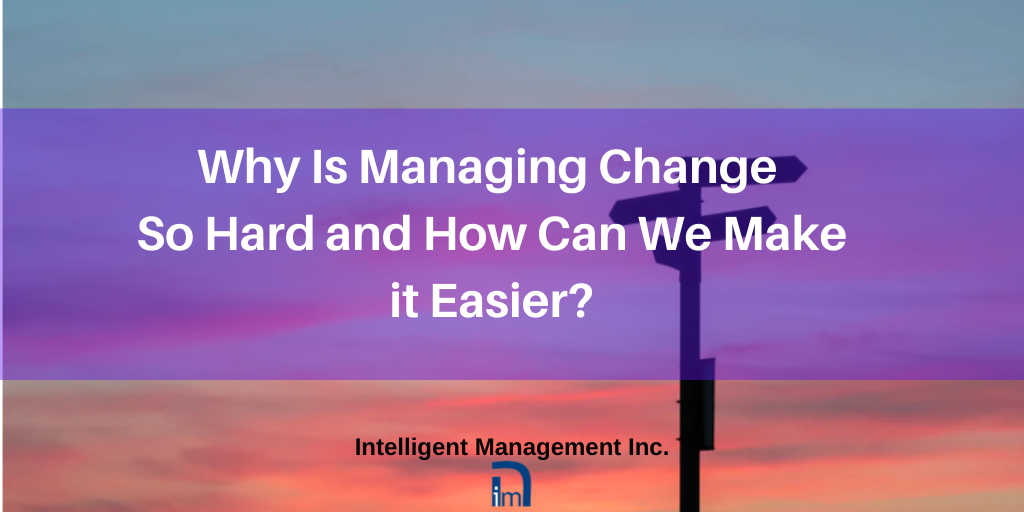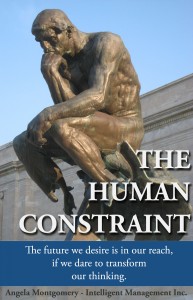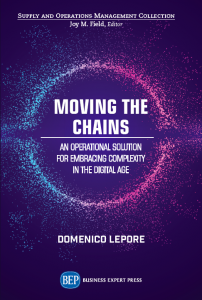
Nothing in our world today is quite the same as it was just a year ago. Many people have had to change completely the way they work and live and many will never “return to normal”. Managing change is something that all of us must become familiar with and it has become a fundamental element of effective leadership.
At Intelligent Management, a large portion of our methodology comes from the Theory of Constraints developed by Dr. Eli Goldratt. The three fundamental questions in the Theory of Constraints are:
What to change
What to change to
How to make the change happen
In our next few posts we will be looking at the difficulty we experience when we face in managing change, how we can achieve change and at the same time improve our systemic intelligence.
The constancy of change
Change is the most unchanging part of our existence:
• our pancreas replaces most of its cells every 24 hours
• the cells of our stomach lining are reproduced every 3 days
• our white blood cells are renewed in 10 days
• 98% of the protein in our brain is turned over in less than 1 month
• our skin replaces its cells at a rate of 100,000 cells/min
And yet, in spite of the constant flux, we resent and resist change as a threat to our happiness. We can go so far as to say that human cognition has a very limited ability to cope with structural changes when it comes to learning. Indeed, the ability that humans have to adapt to physical changes is far greater than the ability needed to adapt to mental changes.
We are all subject to mental models, i.e. the way we think about our world and the assumptions we make about it. Some of these are necessary for our survival. We need to believe that when we open the door of our house there is something solid outside and that we will not step out into an abyss. However, there are other assumptions that, when unchallenged, limit the way we perceive the world around us, and therefore, limit the kind of solutions and progress that we can make.
Conflicting forces: body and soul
There are forces that shape how we learn and translate what we learn into consistent actions. They shape individuals as well as organizations, and they are responsible for the mental models that constrain our perception.
We can only understand these forces if we pierce the outer layer of the self and we connect with the energy within. This energy, we can call it “life”, is what originates all of our faculties. Whether we look at this from a business, scientific, philosophical or religious perspective, the issue of our inner energy is central for any development in our understanding of humans and change. These forces can be broadly divided in two main categories:
1) purely physical drives
2) the equally strong drive that humans have for transcendence – going beyond ordinary experience
Purely physical drives are connected with the primal fears that any individual brings with them. These forces trigger all those actions aimed at restraining our behaviors and they act on us in a way that makes us develop the need to control the environment we are in. The development of these forces is very heavily influenced by the way we experience the world, by the defining moments of our life and by the social and cultural fabric in which we develop our relationships. We need to harness and refine the forces that shape the fundamental need for control that is common to any person if we want to avoid being dominated by them.
On the other hand, the drive humans have for transcendence is an innate desire that we all share to go beyond our current state and see ourselves projected into a different and greater dimension of existence. This is the reflection of an often untapped level of consciousness. This is what many call “soul”, i.e. that part of us that calls for new challenges and yearns for a higher level of spirituality and meaningfulness. We may also call this vision. In the very same way in which we need to exert “bodily control” over our environment we also need to project a “soulful vision” of ourselves into the future if we are to live a fulfilling life.
In our next post, we will look further at the fundamental conflict regarding change connected with Control and Vision.







Leave a Reply